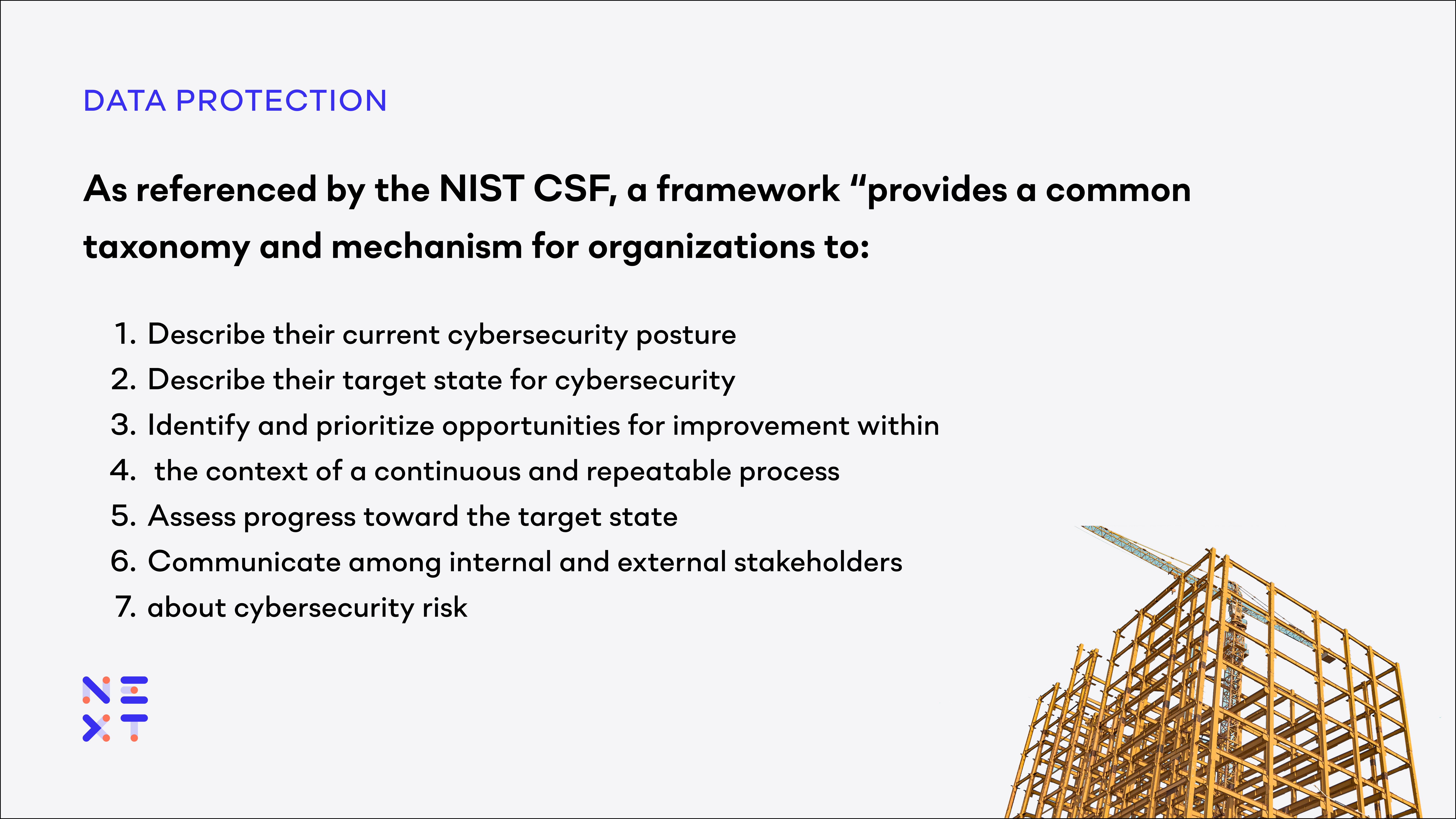Fortinet Acquires Next DLP Strengthens its Top-Tier Unified SASE Solution
Read the release
Securing an organization against cyberattacks from external threats and malicious insiders can be difficult. IT and security organizations can always benefit from guidance. Fortunately, plenty of help is available in the form of cybersecurity frameworks.
Cybersecurity frameworks are structured guidelines, best practices, and standards designed to help organizations improve their cybersecurity posture and protect their information and assets from cyber threats. Frameworks provide a systematic approach to managing cybersecurity risks and serve as a reference point for organizations to establish, implement, and maintain effective cybersecurity programs.
As referenced by the National Institute for Science and Technology Framework for Improving Critical Infrastructure Cybersecurity (NIST CSF), a framework “provides a common taxonomy and mechanism for organizations to:
1) Describe their current cybersecurity posture;
2) Describe their target state for cybersecurity;
3) Identify and prioritize opportunities for improvement within the context of a continuous and repeatable process;
4) Assess progress toward the target state;
5) Communicate among internal and external stakeholders about cybersecurity risk.”
 |
Frameworks leverage the collective security expertise of dozens or hundreds of security professionals to analyze risks and recommend controls. Leading frameworks, like those described below, are internationally recognized as standards. This allows organizations to communicate more quickly to their Boards, customers, and partners the security controls they have to protect organizational assets, trade secrets, and regulated data.
A good cybersecurity framework will help you identify weaknesses in your defenses, controls to mitigate risk, and resources to help plan for responding to threats. Here are a few popular ones:
There is no single “best” framework. Organizations have different risks, threats, vulnerabilities, and risk tolerances. Teams must also consider internal resources and skill sets. A good approach will consider the following steps:
Once you have chosen a cybersecurity framework, regularly review its effectiveness and relevance. Frameworks provide general guidelines, but not all aspects may apply to every organization. It is essential to step back and review your goals and priorities at least annually. Be open to tailoring the framework to your organization's needs, risk profile, and business context.
Complying with minimum guidelines does not guarantee security. Relying solely on a framework without proper risk assessments and continuous monitoring may create a false sense of security. Organizations should regularly assess their security posture and adapt their practices as necessary.
Reveal’s DLP and IRM capabilities can bolster your information security program regardless of your chosen framework. Watch a recorded demo of the platform here, or connect with us and get a live demo customized to your cybersecurity needs.

Blog

Blog

Blog

Blog

Resources

Resources

Resources

Resources

